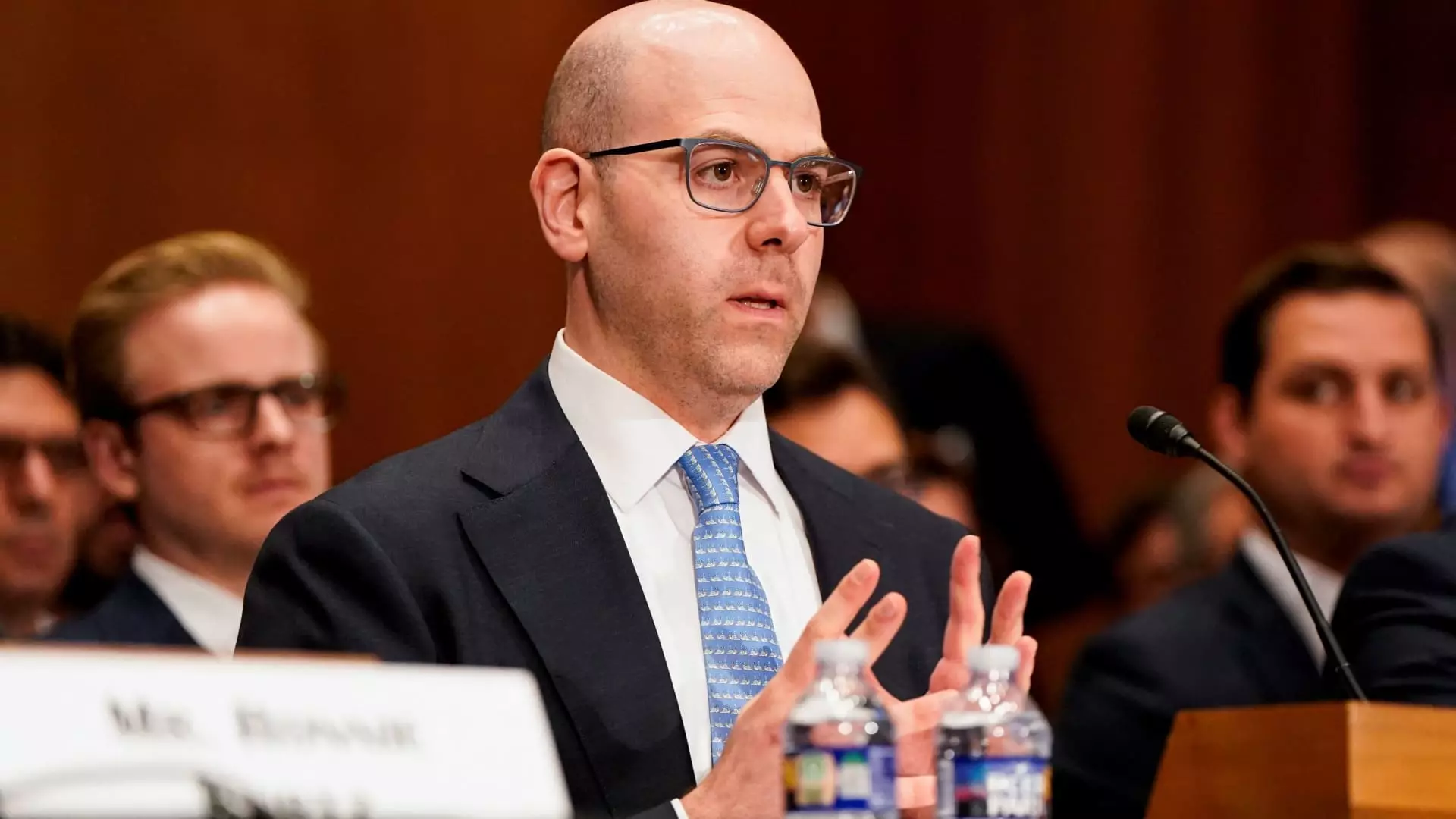The recent comments by Federal Reserve Governor Stephen Miran shed light on the fragile independence of the U.S. central banking system in an increasingly politically charged environment. Miran, who openly defied the consensus at the Fed by voting against a modest interest rate cut, exemplifies the tension between economic policymaking and political influence. His insistence that he made his decision without external pressure reveals a foundational claim of autonomy, yet the context surrounding his appointment and recent political assaults suggest otherwise. The notion that Fed governors operate solely based on economic data and rational analysis rings increasingly hollow when political figures openly browbeat and attempt to influence monetary policy.
The palpable strain becomes evident when considering President Donald Trump’s vocal critique of the Federal Reserve, which has shifted the political climate from discreet lobbying to outspoken public admonishments. Trump’s branding of Chair Jerome Powell as “Too Late” and his calls for aggressive rate cuts reflect a desire to wield monetary policy as a tool for immediate political gains rather than a shield for economic stability. Miran’s assertion of independence clashes starkly with the reality that the President’s overt and sometimes veiled pressure campaigns create an environment rife with potential conflicts of interest. Such tensions threaten to undermine not only the credibility of the Fed but also its ability to act as an impartial arbiter of economic stability.
Furthermore, Miran’s remarks about the collegial atmosphere at the Federal Reserve, despite the political storm surrounding his appointment, seem somewhat idealistic. While his interactions with colleagues such as Lisa Cook were described as welcoming, this ignores the deeper undercurrents of mistrust and political maneuvering permeating the institution. The fact that he feels compelled to meticulously explain his views ahead of a high-profile speech suggests an awareness that his perspective is scrutinized not merely for its economic validity but also for its political implications. The underlying question remains: can the Fed truly operate independently when its key figures are voluntarily placed under the spotlight, and their independence is constantly questioned?
<...>
Political Clout vs. Central Bank Credibility
Miran’s case highlights the broader issue of political clout infiltrating the traditionally insulated realm of monetary policy. For decades, the Federal Reserve has maintained a reputation for making decisions based on data, inflation expectations, and long-term economic health, rather than short-term political wins. Recent events, however, place that reputation under strain. When the sitting president openly pressures the Fed to lower rates, and when potential successors are scrutinized for their political loyalties, the independence that underpins monetary policy’s credibility begins to erode.
The significance of Miran’s independence is amplified by his willingness to express divergent views publicly. His low projection for the fed funds rate by the end of the year, contrasted with the consensus, underscores a belief that the economy might not require the aggressive easing that political pressures demand. Such dissenting voices are vital for the health of the central bank; they serve as checks against groupthink and political overreach. However, for these dissenting views to carry weight and influence policy, the Fed must genuinely uphold its independence—a feat that looks increasingly precarious.
This climate of politicized monetary policy also raises questions about the broader economic implications. If market expectations are swayed by political rhetoric rather than economic fundamentals, the risk of volatility skyrocketing increases. Investors and businesses rely on the Fed’s signals as a source of stability. When those signals appear to be contaminated by political interference, confidence begins to falter. Miran’s situation exemplifies the high-wire act that central bankers walk—balancing their professional judgment with the ever-present question of political loyalty.
The ongoing narrative suggests that the battle for the Federal Reserve’s independence is far from over. Miran’s experience, whether fully emblematic or not, symbolizes the core tension that defines contemporary monetary policy in the U.S.: the struggle to preserve a technocratic decision-making process amid relentless political interference. This struggle isn’t merely about individual votes or speeches; it’s about safeguarding the credibility and stability of the entire economic system.
In the end, the resilience of the Federal Reserve’s independence will depend on whether its leaders can withstand political pressure without compromising their mandate. Miran’s candidness and willingness to voice dissent are encouraging signs, but they are only meaningful if the institutional fabric of the Fed remains strong enough to resist undue influence. For policymakers, economists, and the public alike, recognizing this fight for independence is critical—because the future health of the U.S. economy hinges on it.

